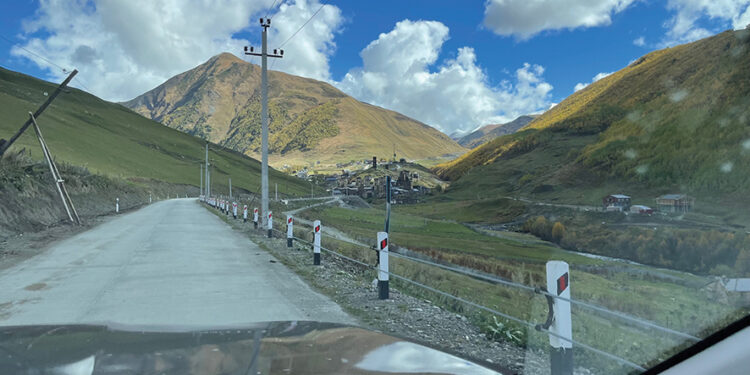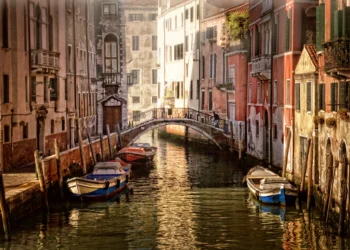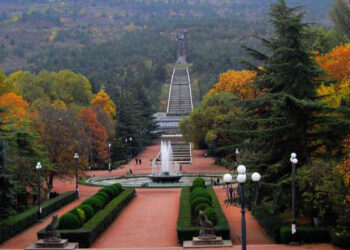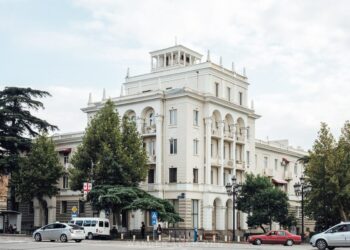Roads… a constant issue in Svaneti. In my 26 years here, I have seen huge changes on them. These continue as I write, because this mountain region’s roads are under constant attack by the forces above and under them, needing equally vigilant attention and maintenance.
My first years of trips up, from 1999 into the early 2010s, have two parts: the dangerous years and the safe(r), later ones. Early, some of the Aprasidzes based in Etseri were infamous for various armed shenanigans against passers-through, foreign and local. Then, after the Rose Revolution, the rule of law was forcibly returned to Svaneti, and it became much less risky even for single young women to trek through.
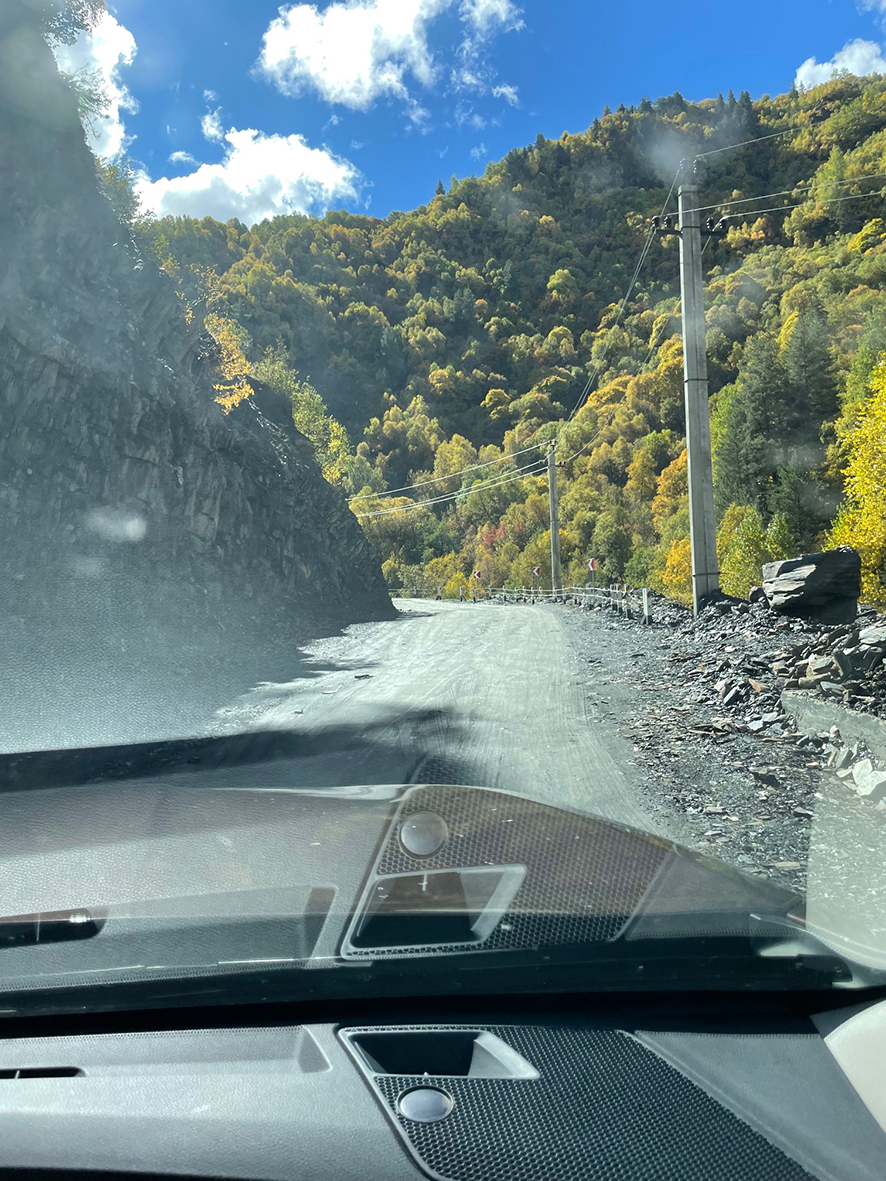
The road itself took a while to catch up, but energetic young President Saakashvili was determined to improve things here. He had the whole thing from Jvari to Mestia re-done with rebar-reinforced cement, with asphalt over this as high up as between the villages of Lakhani and Jorkvali. This all was a huge improvement. NOW we could have daily distribution to Mestia’s burgeoning collection of shops, hotels and guest houses; two 24-hour petrol stations opened; an old ski resort was completely redone, and another made from nothing. Winter tourism became a thing again. What used to take six hours, on a dirt road in 1st and 2nd gear, became a three-hour race.
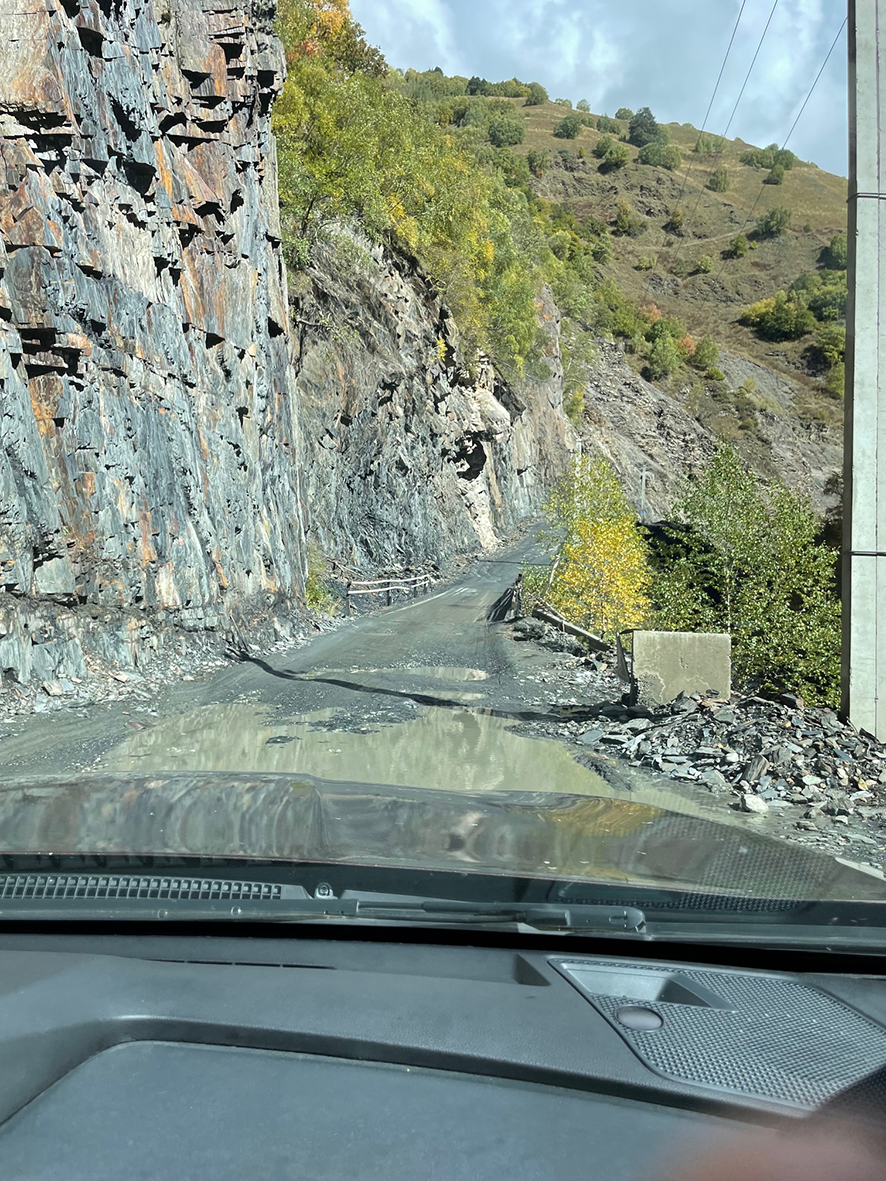
Alas, avalanches, rockfalls and frost heave give us no rest. The first are cleaned up as soon as possible. The heave comes from underneath, and its damage needs much more serious work to repair. Most of this is not being touched.
Also, there are quite a few sections where, say, a 10- or 50-m stretch of road has fallen away towards the raging Enguri, cutting the width of the road in half. These places, too, need a huge amount of work to rebuild. It’s noticeable in an election year, one must note.
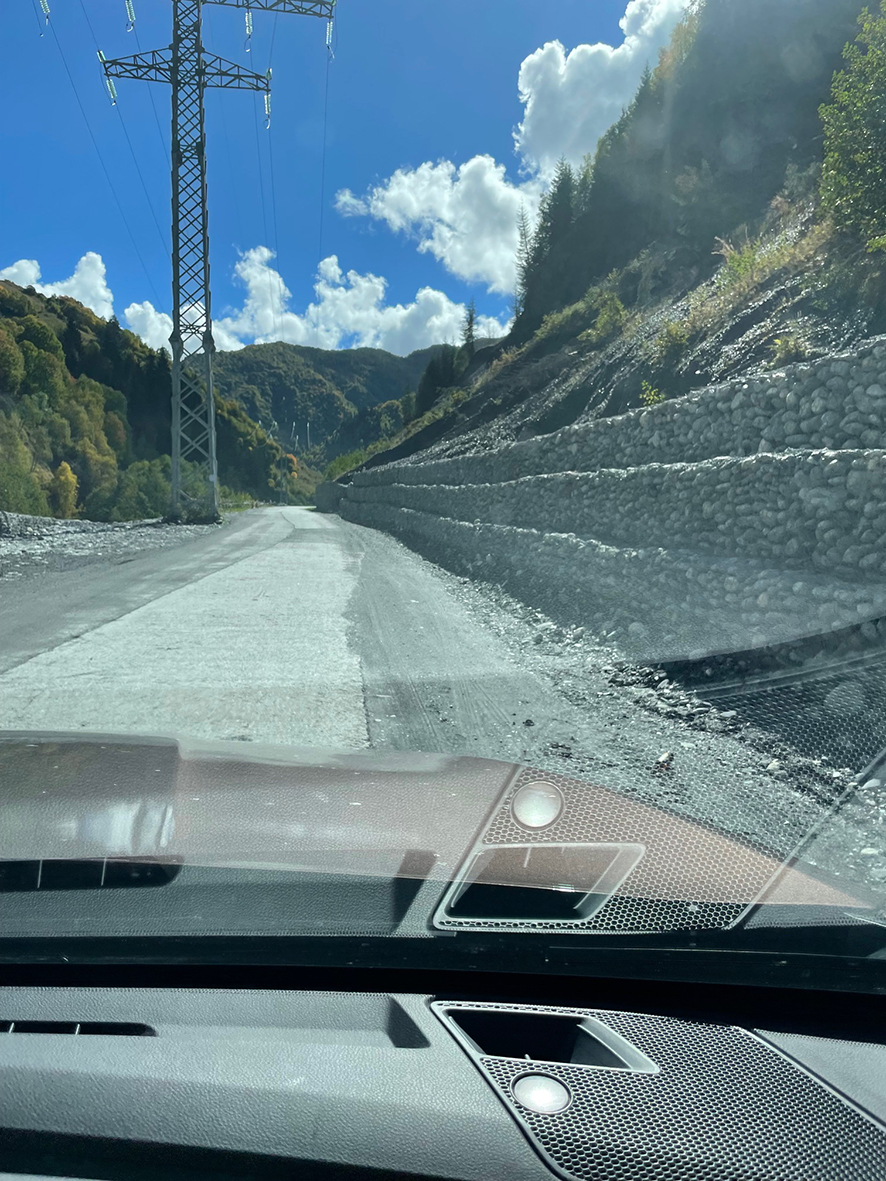
And the cementing and asphalting continue upwards too. The hard and fast rule of “no asphalt past Lakhani” is certainly no longer applicable. Past Mestia, all the way to Ushguli (except for a 2-km stretch near the village), there is new rebar-cement on the whole road. Up through Ushguli itself, and down the other side from the 2800m of altitude to Lentekhi, the capital of Lower Svaneti, is a similar mix of at least cement and also asphalt, lower down. I remember such bad potholes in the zig-zags into Ipari, and from then to Ushguli, slow torture to drive… no longer. Yesterday I made my fastest drive down from Etseri to Zugdidi: about two hours. Maximum average speed in Svaneti: 55 km/h, speeding up a further 5 km/h once we were in flatter Samegrelo proper.
2012 was the year I first saw several newly returned forms of transport on our roads: buses, taxis, motorbikes and pedal bikes.
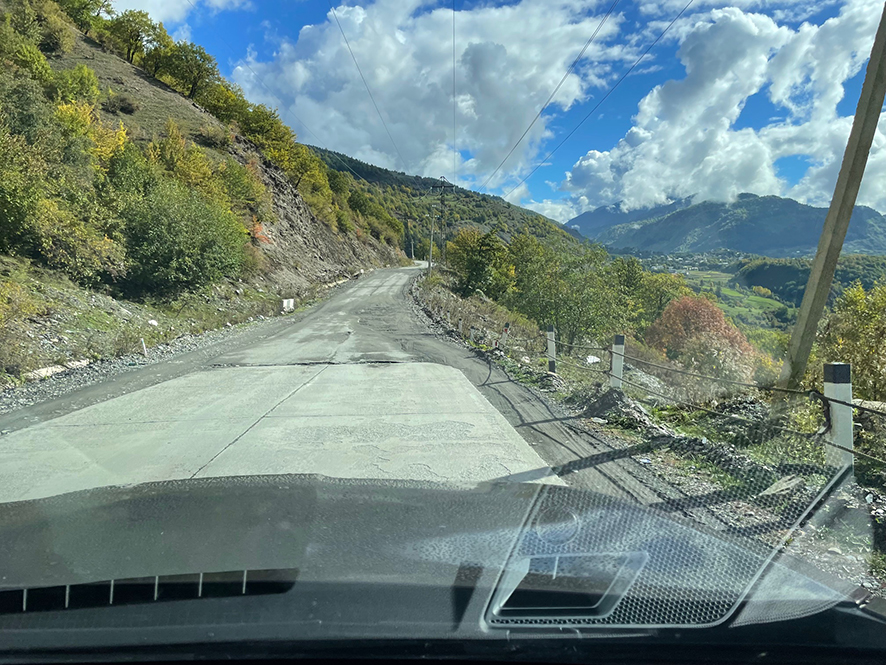
There may be no plans to keep the pass above Ushguli open through winter, which would be a huge endeavor of regular snow-clearing. But there is now a point (maybe Etseri?) from which you now have equal driving times to Tbilisi: down through Zugdidi, or up through Ushguli. The latter way allows you not to backtrack, and also to see the whole other side of Svaneti. This late October, if it’s still open, that is the way my wife and I will take when we return to Tbilisi for the winter.
(The first time we took that road, joining other foreign visitors in their car, Lali got out at least one long section and walked, preferring this to seeing what the road’s ruts and holes were like from inside the car. Now: a whole different game, everyone says).
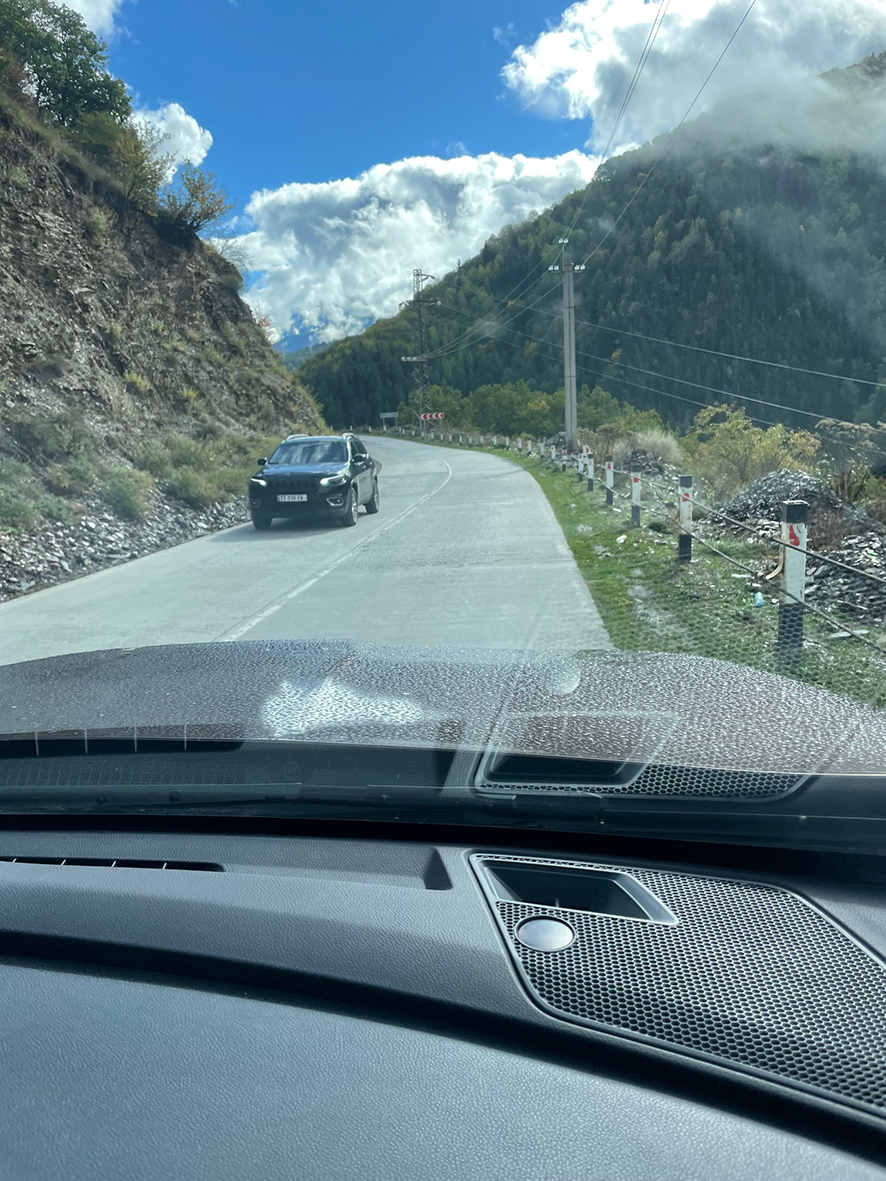
There are 10 tunnels on the Jvari section of the road, the one we usually take, all but two of them with new round walls of reinforced cement. While I still dread meeting a resting cow in one of these dark places, and drive slower with high-beams on, this would be a rare event.
All in all, the perspective of a quarter-century gives one the opportunity to look back, see all the road improvements, note what still needs doing, and hope for the best.
(Note: since I wrote this, all of Svaneti has once again been plunged into mourning over the death of a couple from Chuberi, in an accident which saw their car fall off an unprotected road section into the river. Four children are now orphans, the youngest not yet three years old.)
Blog by Tony Hanmer
Tony Hanmer has lived in Georgia since 1999, in Svaneti since 2007, and been a weekly writer and photographer for GT since early 2011. He runs the “Svaneti Renaissance” Facebook group, now with over 2000 members, at www.facebook.com/groups/SvanetiRenaissance/
He and his wife also run their own guest house in Etseri: www.facebook.com/hanmer.house.svaneti

